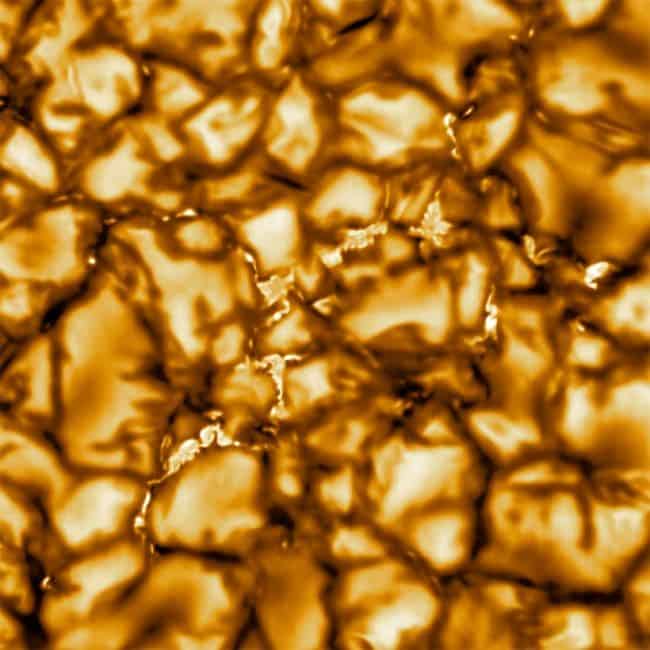In what could be a key step to solve several long-standing mysteries around it, a group of astronomers have released the highest resolution image of the sun, obtained thanks to observations by the Inouye solar telescope in Hawaii.

The images show a never-before-seen level of structure hidden within the plasma exterior. This was achieved thanks to the telescope’s 30km resolution, which is more than twice that of the next best solar observatories around the world. The telescope is located at a 3,000 meters volcano on the island of Maui.
“These are the highest resolution images of the solar surface ever taken,” said Thomas Rimmele, the director of the Inouye solar telescope project. “What we previously thought looked like a bright point – one structure – is now breaking down into many smaller structures.”

The solar telescope revealed the sun’s surface to be speckled with granular structures, each the size of France. At the center of each grain, there are rising columns of plasma, heated to almost 6,000ºC (10,800F). When the plasma cools, it goes back below the surface through channels between the granular structures.
Valentin Pillet, the director of the National Solar Observatory, described the challenges that involved taking the solar images. Keeping the telescope’s mirror at ambient temperature while looking at the sun proved difficult, as temperature deviation causes air turbulences that can alter the images.

At the same time, Pillet said that in order to carry out the project they emptied a swimming pool worth of ice into eight tanks every day. Then, during the day, coolant was routed through the ice tanks and distributed through the pipes of the observatory. They also positioned 100 air jets behind the main mirror.
The experts at the observatory also deflected the incoming sunlight from the primary mirror into a chamber of mirrors, located below the dome. The light was then bounced from mirror to mirror. The observatory is equipped with a full set of instruments, which will allow measuring the magnetic field from the surface of the sun later in the year.
Such observations will help to solve long-standing mysteries around the sun, such as why its atmosphere is heated to millions of degrees when the surface is 6,000ºC. Understanding the physics behind the solar flares will be able to improve the ability to predict space weather.
“On Earth, we can predict if it is going to rain pretty much anywhere in the world very accurately, and space weather just isn’t there yet,” said Matt Mountain, president of the Association of Universities for Research in Astronomy. “What we need is to grasp the underlying physics behind space weather, and this starts at the Sun, which is what the Inouye Solar Telescope will study over the next decades.”


